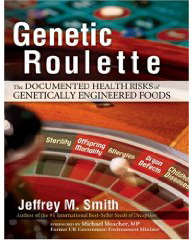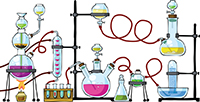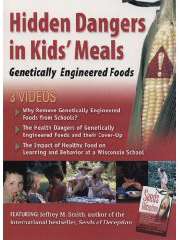Blindness, Mad Cow Disease and Canola Oil
By John Thomas excerpt from:
Young again: How to Reverse the Aging Process
Millions of people have
suffered the loss of their vision from
glaucoma, a disease involving atrophy (deterioration) of the optic
nerve. For years, "experts" have been telling us that glaucoma results
from fluid-pressure buildup in the eye that causes the optic nerve
to deteriorate. This theory was based on an incorrect medical model:
They were wrong! Now, the experts have admitted that this is not true and have
given birth to a new theory. According to it, glaucoma is instead
caused by a deficiency of oxygen and blood flow. Finally they
are on the right trail. In the end, they will discover that glaucoma
is the result of insufficient blood flow due to agglutination (clumping
together) of the red blood cells and waste buildup in the cells
and intercellular fluids.
These blood-corpuscle clusters cannot squeeze through the extremely
tiny capillaries in the posterior of the eye, so cannot deliver
oxygen to the mitochondria.1 This is what the problem has been all along, and if people continue to eat
soy and canola oils, a lot
more of them are going to experience vision irregularities - like retinas and macula lutea degeneration.
 Death of the mitochondria in the cells in the posterior of the
eye is due to oxygen starvation, sodium toxicity and waste accumulation.
When the mitochondria die, the cells die and the posterior eye tissues
atrophy. In this respect, glaucoma has much in common with hair loss, Alzheimer's disease, multiple sclerosis,
cerebral palsy and hearing problems.
Death of the mitochondria in the cells in the posterior of the
eye is due to oxygen starvation, sodium toxicity and waste accumulation.
When the mitochondria die, the cells die and the posterior eye tissues
atrophy. In this respect, glaucoma has much in common with hair loss, Alzheimer's disease, multiple sclerosis,
cerebral palsy and hearing problems.
There are several things a person can do to reverse these debilitating
conditions. Biologically friendly water
is basic to all rejuvenation, as is fresh, viable food.
Detoxification of the tissues and body fluids is accomplished with yucca extract, Kombucha tea,
PACs and colon therapy.
Degradation of Vision
Loss of vision is a known, characteristic side effect of rape oil
which antagonizes the central and peripheral nervous systems
again like soy oil, again worse.
The deterioration takes years, however. Rape (canola) oil causes
emphysema respiratory distress, anemia, constipation, irritability
and blindness in animals-and humans. Rape oil was widely used in
animal feeds in England and Europe between 1986 and 1991 when it
was thrown out. You may remember reading about the cows, pigs and
sheep that went blind, lost their minds, attacked people and had to be shot.
 A woman called me from Chicago to tell me that she had been in
England when the "Mad Cow Disease" had been at its peak. She said
that she had seen a television news report that told people not
to panic if they had been using rape oil in their diet and were
over 65 years of age. The "experts" added that the effects of rape
oil ingestion takes at least 10 years to manifest, and in all likelihood,
most of these people would be dead by then anyway. Comforting!
A woman called me from Chicago to tell me that she had been in
England when the "Mad Cow Disease" had been at its peak. She said
that she had seen a television news report that told people not
to panic if they had been using rape oil in their diet and were
over 65 years of age. The "experts" added that the effects of rape
oil ingestion takes at least 10 years to manifest, and in all likelihood,
most of these people would be dead by then anyway. Comforting!
In the reports I read, the "experts" blamed the behavior on a
viral disease called scrapie. However, when rape oil was removed
from animal feed, "scrapie disappeared.
No longer a European livestock problem; now it is ours. U.S.
farmers grow rape seed, and manufacturers use its oil (canola) in
thousands of processed foods, with the blessings of government watchdog agencies, of course.
Rape Seed Oil or "Canola"?
- Canola is a coined word. It appeared out of nowhere and is not
listed in any but the most recent reference sources.
- The flip side of the canola coin reads: "rape"! You must admit
that canola sounds better than rape. The name canola disguised the
introduction of rape oil to America.
- Canola oil comes from the rape seed, which is part of the mustard
family of plants. Rape is the most toxic of all food-oil plants. Like soy, rape is a weed. Insects
will not eat it; it is deadly poisonous!
- Canola is a semi-drying oil that is used as lubricant, fuel,
soap and synthetic rubber base, and as an illuminate for the slick
color pages you see in magazines. It is an industrial oil and does
not belong in the body!
- Canola oil has some very interesting characteristics and effects
on living systems. For example, it forms latex-like substances that
agglutinate the red blood corpuscles, as does soy, but much more pronounced.
Officially, canola oil is known as "LEAR" oil
 Officially, canola oil is known as "LEAR" oil - Low Erucic Acid, Rape. Industry
experts love to tell how canola was developed in Canada and that
it is safe to use. They admit it was developed from the rape seed,
but that through genetic engineering, i.e. irradiation, it is no
longer rape seed, but "canola" instead. ["Canadian oil", get it?]
Officially, canola oil is known as "LEAR" oil - Low Erucic Acid, Rape. Industry
experts love to tell how canola was developed in Canada and that
it is safe to use. They admit it was developed from the rape seed,
but that through genetic engineering, i.e. irradiation, it is no
longer rape seed, but "canola" instead. ["Canadian oil", get it?]
They love to talk about canola"s qualities - its unsaturated
structure(Omega 3, 6, 12), its wonderful digestibility and its fatty
acid makeup. They turn us against naturally saturated oils and fats,
while they come to the rescue with canola oil. They even tell us
how Asia has warmly embraced canola due to its distinctive flavor.
Isn't it wonderful how internationalists brokers "help" third-world
peoples? Reminds me of the introduction of the microwave oven.
An earthly expression from the Old West sums up the flimflam
accompanying rape oil"s rebirth and promotion worldwide: "horse shit
and gun smoke!" Its new name provided the perfect cover for commercial
interests wanting to make billions in the United States. The euphemism
is still very much in use, but is no longer needed. Look at the
ingredients list on peanut butter labels. The peanut oil has been
removed and replaced with rape oil.

Chemical Warfare
 Between 1950 and 1953, white mustard(rape) seed was irradiated
in Sweden to increase seed production and oil content. Irradiation
is the process the experts want use to make our food "safe" to eat.
Genetically engineered fruits and vegetables - which will soon have
innocent things like hepatitis-B spliced into their DNA - are another
example of man"s misuses of technology and abuse of public trust
by powerful interests and "head-in-the-sand" watchdog agencies.*8*
Between 1950 and 1953, white mustard(rape) seed was irradiated
in Sweden to increase seed production and oil content. Irradiation
is the process the experts want use to make our food "safe" to eat.
Genetically engineered fruits and vegetables - which will soon have
innocent things like hepatitis-B spliced into their DNA - are another
example of man"s misuses of technology and abuse of public trust
by powerful interests and "head-in-the-sand" watchdog agencies.*8*
Canola oil contains large amounts of "isothiocyanates" - cyanide-containing
compounds. Cyanide inhibits mitochondrial production of adenosine
triphosphate(ATP), which is the energy molecule that fuels the mitochondria.
ATP energy powers the body and keeps us healthy and young !
Canola Oil and Metabolism
- Many substances can bind metabolic enzymes and block their activity
in the body. In biochemistry, theses substances are called inhibitors.
- Toxic substances in canola and soy oils encourage the formation of molecules with covalent
bonds which are normally irreversible: They cannot be broken by
the body once they have formed.
- For example, consider the pesticide malathion. It binds to
the active site of the enzyme acetylcholinesterase and stops this
enzyme from doing its job, which is to divide acetylcholine into
choline and acetate.
Nerve Function and Organophosphates
Acetylcholine is critical to nerve-impulse transmission. When
acetylcholinesterase is inhibited, as by pesticide residues, nerve
fibers do not function normally, and muscles do not respond.
 For
example, think of a garage door opener: If its signal is not received,
the door does not open. worth one"s body, the hand or leg is ordered
to move, but does not respond. Recently there has been a tremendous
increase in disorders like systemic lupus,
multiple sclerosis, cerebral palsy, "Myelinoma"*10*
pulmonary hypertension and neuropathy. Soy and canola oils are players
in the outbreak of these disease conditions. So are the organophosphates,
insecticides such as malathion used in food production in the name
of efficiency.
For
example, think of a garage door opener: If its signal is not received,
the door does not open. worth one"s body, the hand or leg is ordered
to move, but does not respond. Recently there has been a tremendous
increase in disorders like systemic lupus,
multiple sclerosis, cerebral palsy, "Myelinoma"*10*
pulmonary hypertension and neuropathy. Soy and canola oils are players
in the outbreak of these disease conditions. So are the organophosphates,
insecticides such as malathion used in food production in the name
of efficiency.
Acetylcholinesterase inhibitors cause paralysis of the striated)
skeletal) muscles and spasms of the respiratory system. That is
why malathion is the pesticide of choice by the experts; it kills
insects by paralysis - just like rotenone from soy beans does! It inhibits the
insect"s enzymes and those of humans, too!
Canola oil is an edible vegetable oil that can be used to control insects on a wide variety of crops.
The public Bamboozled?
Agents Orange and Blue that were used in Viet Nam to defoliate
jungle cover are also organ-ophosphorus compounds. The Viet Nam vets
and the Vietnamese people know about them firsthand. Government
experts who okayed their use and chemical companies that manufactured
them have finally owned up to their toxic effects on people and
the environment. Nonetheless, present-day experts in academia and
government continue to bamboozle the public with stories of "safe"
science and cheap food through the use of poisons.
- Canola oil is also high in glycosides that cause serious problems
by blocking enzyme function and deprive us of our life force - -
chi, qi, prana, call it what you like.
- Glycosides interfere with the biochemistry of humans and animals.
Their presence in rattlesnake venom inhibits muscle enzymes and
causes instant immobilization of the victim.
- Canola Oil, HIV, and AIDS Soy and canola oil glycosides also
depress the immune system - the T cells - to go into a stupor and
fall asleep on the job. These oils alter the bioelectric "terrain"
and promote disease.
The Cancer/Trans-Fatty Acid Connection - Known in 1949!
In orthodox cancer research, renowned cancer researchers, among
them, Nobel Prize winner, V. Euler of Stockholm, wrote and published
a book in 1949 in which they concluded that if the numerous and diverse symptoms associated with
various types of cancer were reduced
to one common denominator, it would be that "the fat lacks the ability
to integrate in the living tissue". "Trans-Fatty acid is the name
of the fat that lacks this ability - it is bad fat.
Non-Spoiling", Spreadable" Oils Are Destroying Our Health
Since 1902, Western countries have resorted to chemical process
to destroy the "unsaturatedness" of vegetable oils. It is done to
make them easier to handle; easier to market; and to preserve them
so they will not spoil so quickly. In the early 1900s, clever advertisements
hailed its "spreadability" - exclaiming that what everyone was waiting
for was "a spreadable fat"! Although the destruction of the essential
elements of the fat was originally well intended - to prevent it
from spoiling the methods of processing fats are destroying our
health. Avoid any vegetable oil that is labeled 'hydrogenated',
or partially hydrogenated, as this oil contains 100% Trans-fatty
acid!
Why Are We Still Being "Sold" Trans-Fatty Acid?
Food manufacturing is a big, profitable business and employs
many highly skilled lobbyists. The new U.S. labeling laws do not
list "Trans-Fatty acid" because the large food manufacturers spent
billions of dollars to pay for lobbyists to keep "Trans-fatty acid"
off the labels. "Cold Pressed" labeling means nothing in the U.S.
All commercial oils and nut butters sold in U.S. Supermarkets contain
Trans-fatty acid this is because the U.S. government allows heat
treated and high pressure squeezed vegetable oil to be used and
even labeled "Cold Processed". The Italian government passed a law
that olive oil must be protected from heat and high pressure. The
U.S. government could save many lives if it passed a similar law
to include all vegetable oil (and banned cotton seed oil - it is
poison).
Figure The Amount of Trans-Fatty Acid In Packaged Food By Using The New U.S. Labels
- Find the amount of "Total Fat" on the label.
- Find the amounts of "Saturated Fat", "Polyunsaturated Fat" and "Monosaturated Fat". (These are found on the label,
listed directly under "Total Fat" and slightly indented. If one or the other is not listed, that particular food does not contain it.)
- Add theses three together. If there are only two listed, add them together or use one amount if only one is listed.
- Subtract the total amount of #3 from the amount of #1. This would be the answer is the amount of Trans-fatty Acid in that product.
Fats That Can Be Safely Heated
Butter and tropical fats - coconut, palm, palm kernel, cocoa,
and shea nut - are safest for frying, because they contain only
small quantities of Essential Fatty-Acids(EFAs). The saturated
fatty acids contained in these fats/oils are inert and therefore
heat stable. Heat does not destroy them in the same way it destroys
EFAs. Butter and tropical Fats are best used unhydrogenated.
Only small amounts should be eaten, as they are sticky, hard,
saturated fatty acid-containing fats.
Tropical oils got a bad reputation for increasing cholesterol
and triglyceride levels that supposedly cause cardiovascular
disease. An unconfirmed rumor suggests that the soy bean industry
financed the successful campaign against tropical fats to kill
imports and increase soy bean sales. Tropical oils used in their
country of origin have been shown in several studies to decrease
cholesterol levels. The difference in results may be due to
several causes: deterioration in tropical oils during storage, differing experimental design; or a combination of the above.
Raw tropical oils are rich sources of vitamin E and tocotrienols,
which help protect arteries from damage leading to cardiovascular
disease(CVD). Olive oil imported from Italy is safe for baking
but not for frying or deep frying. But only imported Italian
olive oil as it is cold processed by law.
Liver and Gall Bladder Problems Improved
The metabolism of fat affects each and every organ. Anyone
with liver and gall bladder problems is quite aware of how fats
affect them. In medicine they say "Eat less fat", because it
was observed that fats do not agree with the sick person. However,
if this person with liver and gall bladder problems is given
"good fat", i.e. live, highly unsaturated fat, it will agree
with him or her very well. It is best to use the threefold unsaturated
fat from flaxseed oil or hemp seed oil, together with a substance
that makes it soluble(mix it with plain, low fat cottage cheese
or emulsify it with 2 or more ounces of low fat milk) before
you take it.
Many serious medical problems can be solved on the simple
basis of taking flax seed oil or hemp seed oil and a sulfur
containing protein.
Diseased organs react very favorably to this remedy. (Ed.
Note: Also Recommended: EPA capsules (fish oil) and Evening
Primrose Oil capsules) Alcohols and glycosidcs in canola and
soy oils shut down our protective grid-the immune system. Fluoride,
immunizations, antibiotics and bio-junk food play a similar
role in immune system collapse. An alcohol is a chemistry term
for the "reactive" chemical group on an organic molecule. Those
"R" groups are what make organic compounds work-for good and
bad! Canola alcohols and glycosides are very reactive. They
are as toxic as fermented alcohols, but their effects manifest
differently. The damage takes years to show up. In a future
article, I will discuss the sweet proteins in soy.

Hybrid or Genetically Engineered?
Canola is a hybrid variety of rapeseed developed
in Canada during the 1970s from traditional pedigree hybrid
propagation techniques based on black mustard, leaf mustard,
and turnip rapeseed. It is true however, that some forms of
rapeseed are genetically engineered. Canola oil that is certified
organic is from non-genetically altered seed. Our own Whole
Foods Market 365 Brand of canola oil is from non-genetically altered rapeseed.
The Truth About Genetically Modified Foods
When surveyed, the majority
of consumers are not comfortable eating genetically engineered
foods, but most people can't really explain specifically
why they have concerns. Watch this in depth look at the
history of the GE debate. This web movie covers every aspect
of the issue, from health impacts, to pesticide use, to
biotech industry cover-ups.
"Canola oil is a health hazard to use as a cooking oil or
salad oil. It is not the healthy oil we thought it was. It is
not fit for human consumption, do not eat canola oil, it can
hurt you. Polyunsaturated or not, this is a bad oil."The Wall
Street JournaL June 7, 1995 pB6 (W) pB6 (E) col1(11 col in)
Compiled by Darleen Bradley.
Canola is now Confined to those Cultivars Brassica rapa and B. napus
"Traditional rapeseed is considered unsuitable as a source of
food for either humans or animals due to the presence of two naturally
occurring toxicants, erucic acid and glucosinolates. Following intensive
conventional plant breeding over a period of twenty years, canola
is now confined to those cultivars (Brassica rapa and B. napus)
that contain low levels of erucic acid and glucosinolates, so called
“double low” varieties. Quality control measures also stipulate
that no protein is present in canola oil suitable for human consumption."
The analyses were conducted on test material grown over multiple
growing seasons and at different geographical locations and thus
demonstrate that the genetic modifications have not resulted in
any significant variation in composition or agricultural performance
in the transformed lines when compared to the non-transformed control
lines grown under the same conditions. Detailed compositional analyses
on the transformed seeds also showed no differences in the levels
of natural toxicants. In particular, the level of erucic acid in
the oil (and glucosinolates in the meal) conformed to the compliance
requirements for certification as canola. The transformed lines
were tested in a range of environmental situations and following
treatment with commercial levels of glufosinate-ammonium. The nutritional
value of the transformed seeds was evaluated in two animal feeding
studies using rabbits and broiler chickens. In both instances, where
the transformed canola seeds were included in the diets of the animals
over a defined period, no adverse effects attributable to the test
material were observed in the animals, and all animals displayed
normal patterns of growth. Conclusion On the basis of the available
evidence, oil derived from the genetically modified canola lines
(T45, Topas 19/2, Ms1, Ms8, Rf1, Rf2, Rf3 and their crosses), is
equivalent to oil from non-GM canola in terms of its safety and
nutritional properties.
Key toxicants - Seeds from the original native oilseed
rape plants naturally contain high levels of two toxins, erucic
acid and glucosinolates, and prior to the mid 1950s, the extracted
oil was used primarily for industrial purposes. Erucic acid, a long
chain fatty acid, is a natural constituent of the seed oil, while
glucosinolates are confined to the seed meal with the majority of
the protein and other seed components.
Excerpt from Holistic Health Encyclopedia
Rape seed oil (Canola oil) is widely used in thousands of processed
foods...with the blessings of our own government. Canola oil was
first developed in Canada. It's proponents claim that due to genetic
engineering and irradiation, it is no longer rape oil, but "canola"
(Canadian oil). They also claim it is completely safe, pointing
to it's unsaturated structure and digestibility. Although, I could
not verify it, it is claimed the Canadian government paid the FDA
the sum of $50 million dollars to have canola oil placed on the
GRAS list (Generally Recognized As Safe). However it was done, a
new industry was created.
The truth is, however, that rape is the most toxic of all food
oil plants. Not even insects will eat it. No wonder farmers like
growing it.
Studies of canola oil done on rats indicate many problems. Rats
developed fatty degeneration of heart, kidney, adrenals and thyroid
gland. When the canola oil was withdrawn from their diet, the deposits
dissolved, but scar tissue remained on the organs. Why were no studies
done on humans before the FDA placed it on the GRAS list? Consumed
in food, Canola oil depresses the immune system, causing it to "go
to sleep." Canola oil is high in glycosides which cause health problems
by blocking (inhibiting) enzyme function. It's effects are accumulative,
taking years to show up. One possible effect of long term use is
the destruction of the protective coating surrounding nerves called
the mylin sheath. When this protective sheath is gone, our nerves
short-circuit causing erratic, uncontrollable movements.

Excerpts The Great Con-ola
by Sally Fallon and Mary G. Enig, PhD
Rapeseed oil was a monounsaturated oil that had been used extensively
in many parts of the world, notably in China, Japan and India. It
contains almost 60 percent monounsaturated fatty acids (compared
to about 70 percent in olive oil). Unfortunately, about two-thirds
of the mono-unsaturated fatty acids in rapeseed oil are erucic acid,
a 22-carbon monounsaturated fatty acid that had been associated
with Keshan’s disease, characterized by fibrotic lesions of the
heart. In the late 1970s, using a technique of genetic manipulation
involving seed splitting,2 Canadian plant breeders came up with
a variety of rapeseed that produced a monounsaturated oil low in
22-carbon erucic acid and high in 18-carbon oleic acid. The new
oil referred to as LEAR oil, for Low Erucic Acid Rapeseed, was slow
to catch on in the US. In 1986, Cargill announced the sale of LEAR
oil seed to US farmers and provided LEAR oil processing at its Riverside,
North Dakota plant but prices dropped and farmers took a hit.3
Marketing Lear Oil as a 'Healthy Alternative' to Polyunsaturated Oils
Before LEAR oil could be promoted as a healthy alternative to polyunsaturated
oils, it needed a new name. Neither “rape” nor “lear” could be expected
to invoke a healthy image for the new “Cinderella” crop. In 1978,
the industry settled on “canola,” for “Canadian oil,” since most
of the new rapeseed at that time was grown in Canada. “Canola” also
sounded like “can do” and “payola,” both positive phrases in marketing
lingo. However, the new name did not come into widespread use until
the early 1990s. An initial challenge for the Canola Council of
Canada was the fact that rapeseed was never given GRAS (Generally
Recognized as Safe) status by the US Food and Drug Administration.
A change in regulation would be necessary before canola could be
marketed in the US.4 Just how this was done has not been revealed,
but GRAS status was granted in 1985, for which, it is rumored, the
Canadian government spent $50 million to obtain.
Modern oil processing is a different thing entirely. The oil
is removed by a combination of high temperature mechanical pressing
and solvent extraction. Traces of the solvent (usually hexane) remain
in the oil, even after considerable refining. Like all modern vegetable
oils, canola oil goes through the process of caustic refining, bleaching
and degumming—all of which involve high temperatures or chemicals
of questionable safety. And because canola oil is high in omega-3
fatty acids, which easily become rancid and foul-smelling when subjected
to oxygen and high temperatures, it must be deodorized. The standard
deodorization process removes a large portion of the omega-3 fatty
acids by turning them into trans fatty acids. Although the Canadian
government lists the trans content of canola at a minimal 0.2 percent,
research at the University of Florida at Gainesville, found trans
levels as high as 4.6 percent in commercial liquid oil.24 The consumer
has no clue about the presence of trans fatty acids in canola oil
because they are not listed on the label.
A large portion of canola oil used in processed food has been
hardened through the hydrogenation process, which introduces levels
of trans fatty acids into the final product as high as 40 percent.25
In fact, canola oil hydrogenates beautifully, better than corn oil
or soybean oil, because modern hydrogenation methods hydrogenate
omega-3 fatty acids preferentially and canola oil is very high in
omega-3s. Higher levels of trans mean longer shelf life for processed
foods, a crisper texture in cookies and crackers—and more dangers
of chronic disease for the consumer.

CANOLA OIL: Deadly for the Human Body!
Beware of Canola Oil, Canola Oil is an Industrial Oil, Not Fit For Human Consumption
- It is genetically engineered rapeseed
- It has been shown to cause lung cancer (Wall Street Journal: 6/7/95)
- Generally rapeseed has a cumulative effect, taking almost 10 years before symptoms begin to manifest. It has a tendency
to inhibit proper metabolism of foods and prohibits normal enzyme function. Canola is a
Trans Fatty Acid, which has shown to have direct link to cancer. These Trans Fatty acids are labeled as a
hydrogenated or partially hydrogenated oils. Avoid all of them!
- According to John Thomas' book, Young Again, 12 years ago in England and Europe, rape seed was fed to cows, pigs and sheep
who later went blind and began attacking people. There were no further attacks after the rape seed was eliminated from the diet.
What's Wrong with Partially Hydrogenated Oils?
Unlike butter or virgin coconut oil, hydrogenated oils contain
high levels of trans fats. A trans fat is an otherwise normal
fatty acid that has been "transmogrified", by high-heat processing
of a free oil. The fatty acids can be double-linked, cross-linked,
bond-shifted, twisted, or messed up in a variety of other ways.
Trans fats are poisons, just like arsenic or cyanide. They interfere
with the metabolic processes of life by taking the place of
a natural substance that performs a critical function. And that
is the definition of a poison. Your body has no defense against
them, because they never even existed in our two billion years
of evolution -- so we've never had the need or the opportunity
to evolve a defense against them. Partially hydrogenated oils
will not only kill you in the long term by producing diseases
like multiple sclerosis and allergies that lead to arthritis,
but in the meantime they will make you fat!
Canola oil from the rape seed, referred to as the Canadian oil
because Canada is mainly responsible for it being marketed in
the USA The Canadian government and industry paid our Federal
Food and Drug Administration (FDA). $50 million dollars to have
canola oil placed on the (GRAS) List "Generally Recognized As
Safe". Thus a new industry was created. Laws were enacted affecting
international trade, commerce, and traditional diets. Studies
with lab. animals were disastrous. Rats developed fatty degeneration
of heart, kidney, adrenals, and thyroid gland. When canola oil
was withdrawn from their diets, the deposits dissolved but scar
tissue remained on all vital organs. No studies on humans were
made before money was spent to promote Canola oil in the USA.
Adrenoleukodystrophy (ALD) is a rare fatal degenerative disease
caused by in a build up long-chain fatty acids (c22 to c28)
which destroys the myelin (protective sheath ) of the nerves.
Canola oil is a very long chain fatty acid oil (c22). Those
who will defend canola oil say that the Chinese and Indians
have used it for centuries with no effect, however it was in
an unrefined form.
Be Careful of Canola
Refined canola oil, typically found in conventional food
stores, is usually exposed to high temperatures, deodorizing
and bleaching. Its health-giving constituents are processed
away, and its omega-3s converted into the undesirable trans
form. Even "lightly refined" and "expeller pressed oils can
be exposed to deodorizing, which may raise the oil temperature to a sizzling 450°– 470°F.